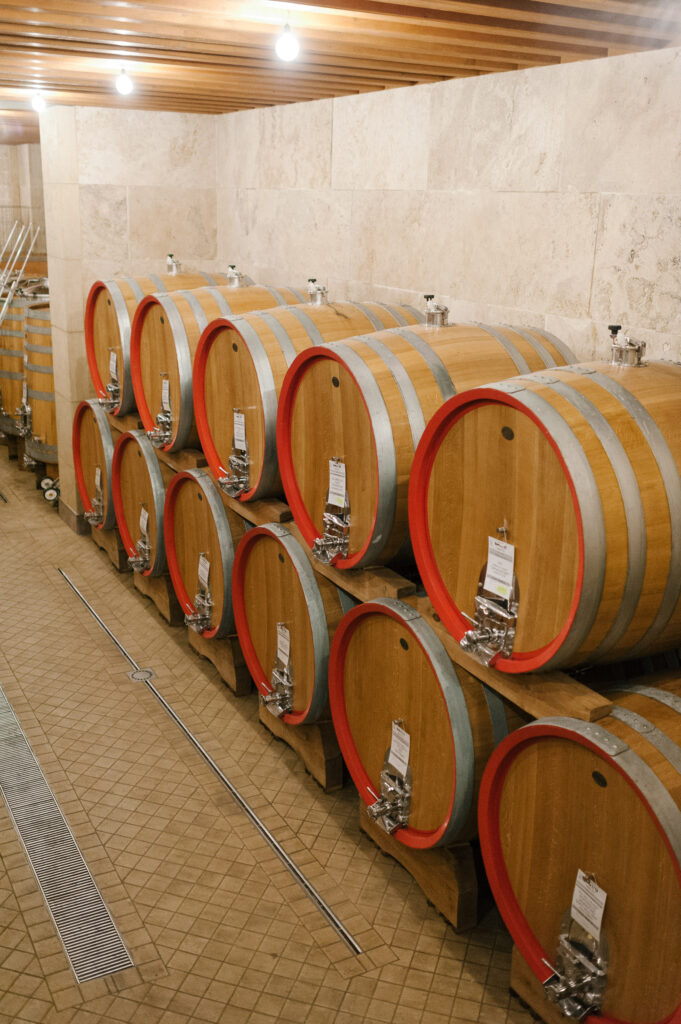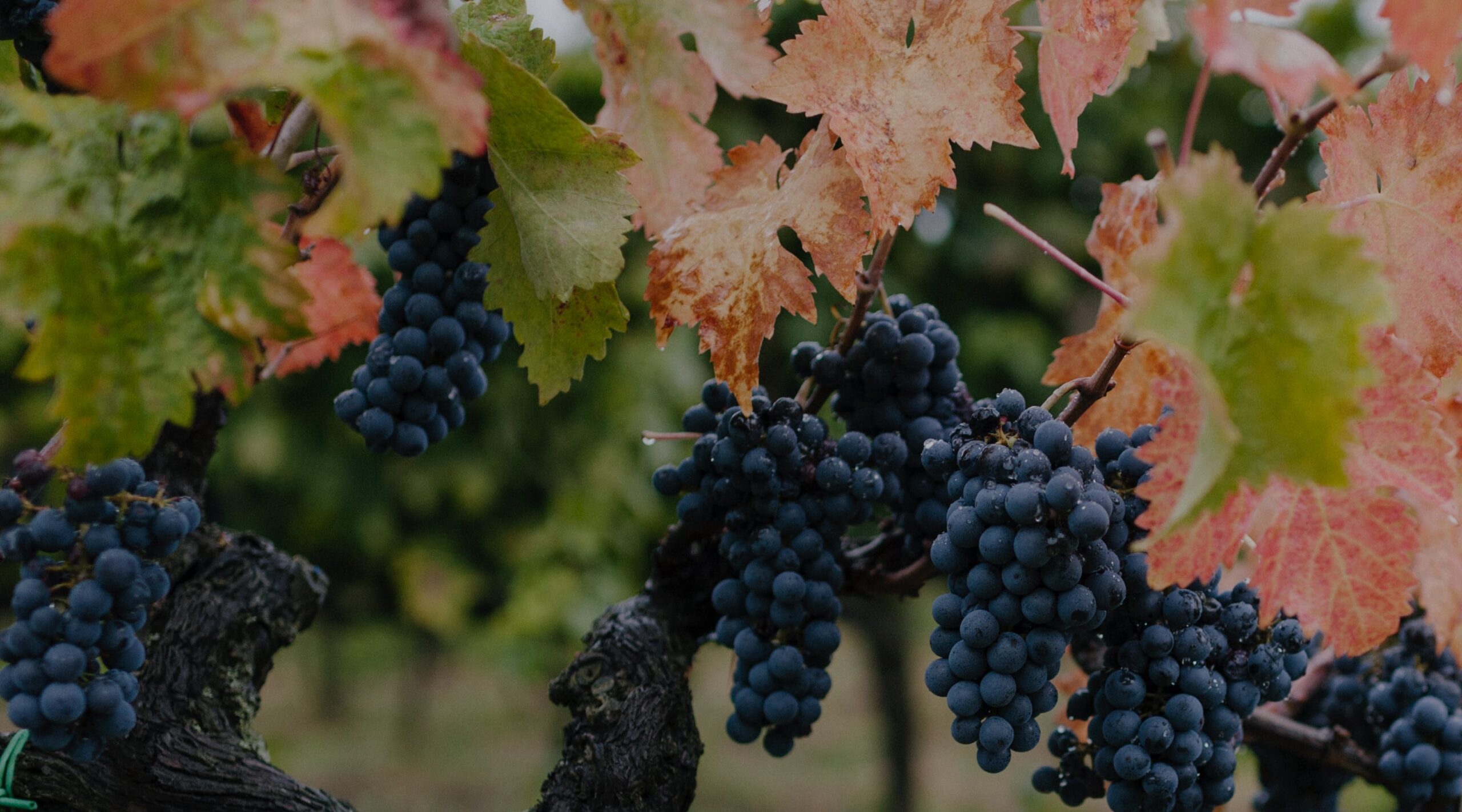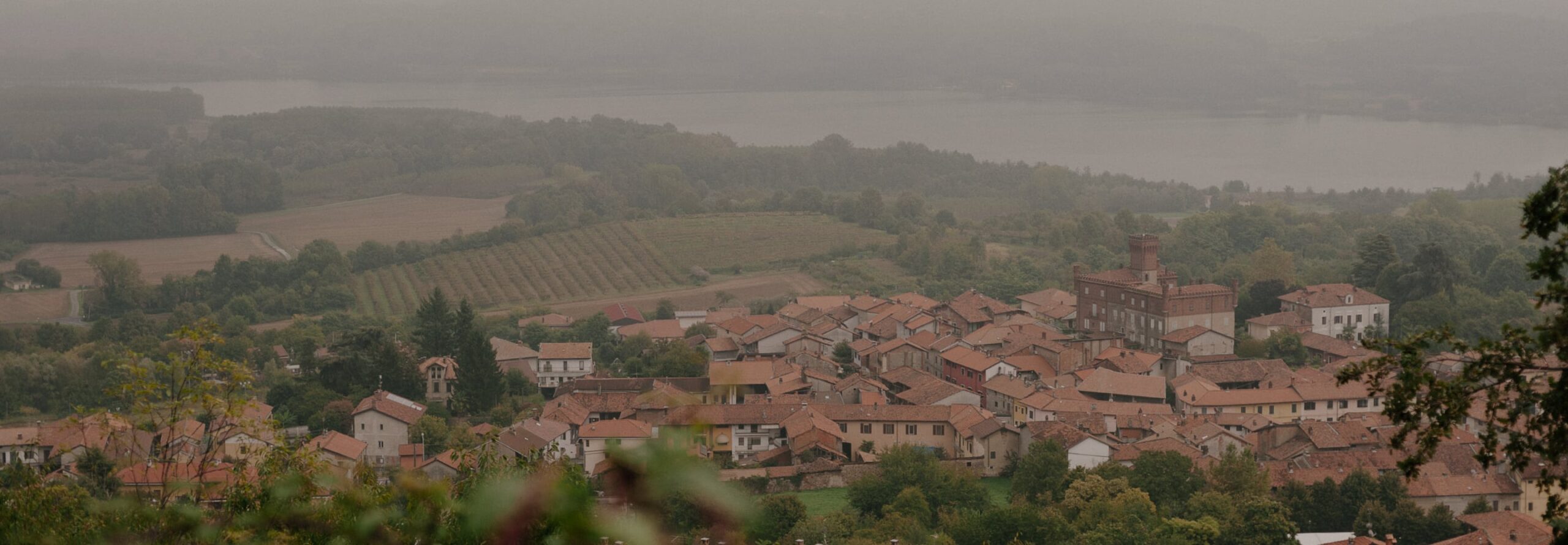Over the past 35 years, Giampiero Bea—both through his own deeply personal wines and his far-reaching influence—has become a cornerstone of our family of growers. Building on the work of his father, a through-and-through farmer whose Umbrian dialect is so thick as to be nearly incomprehensible to outsiders, Giampiero realized what made Paolo’s wines so special and built a working philosophy around it. In a series of decades that saw Italian winegrowers embracing modern technology whole-hog, Giampiero—as co-founder of the ViniVeri (“Real Wine”) group—advocated for respectful vineyard work, biodiversity, a de-emphasis on technology in the cellar, non-engagement with professional critics, and an overall trust in old, tried-and-true agrarian wisdom.
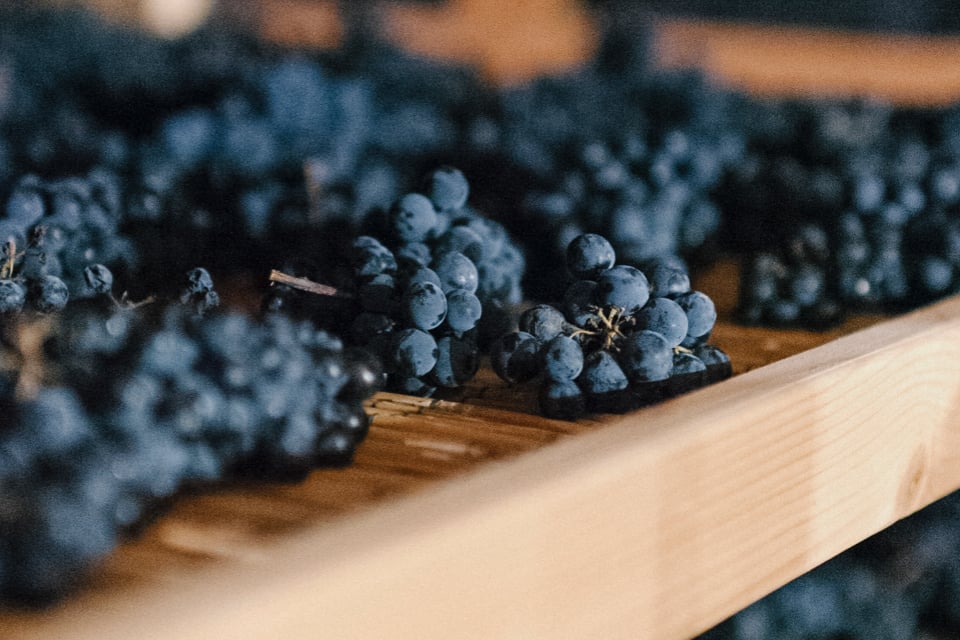
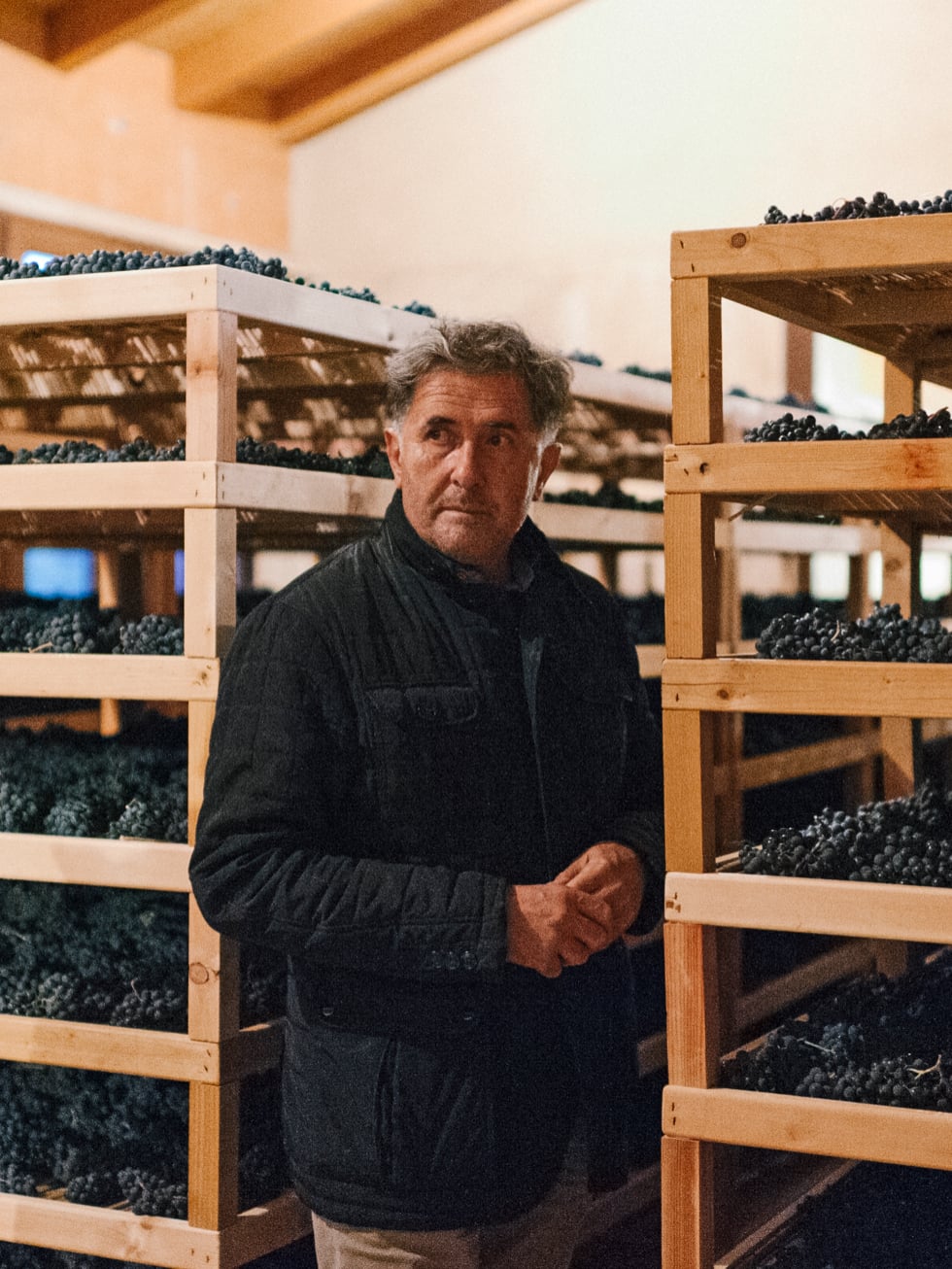
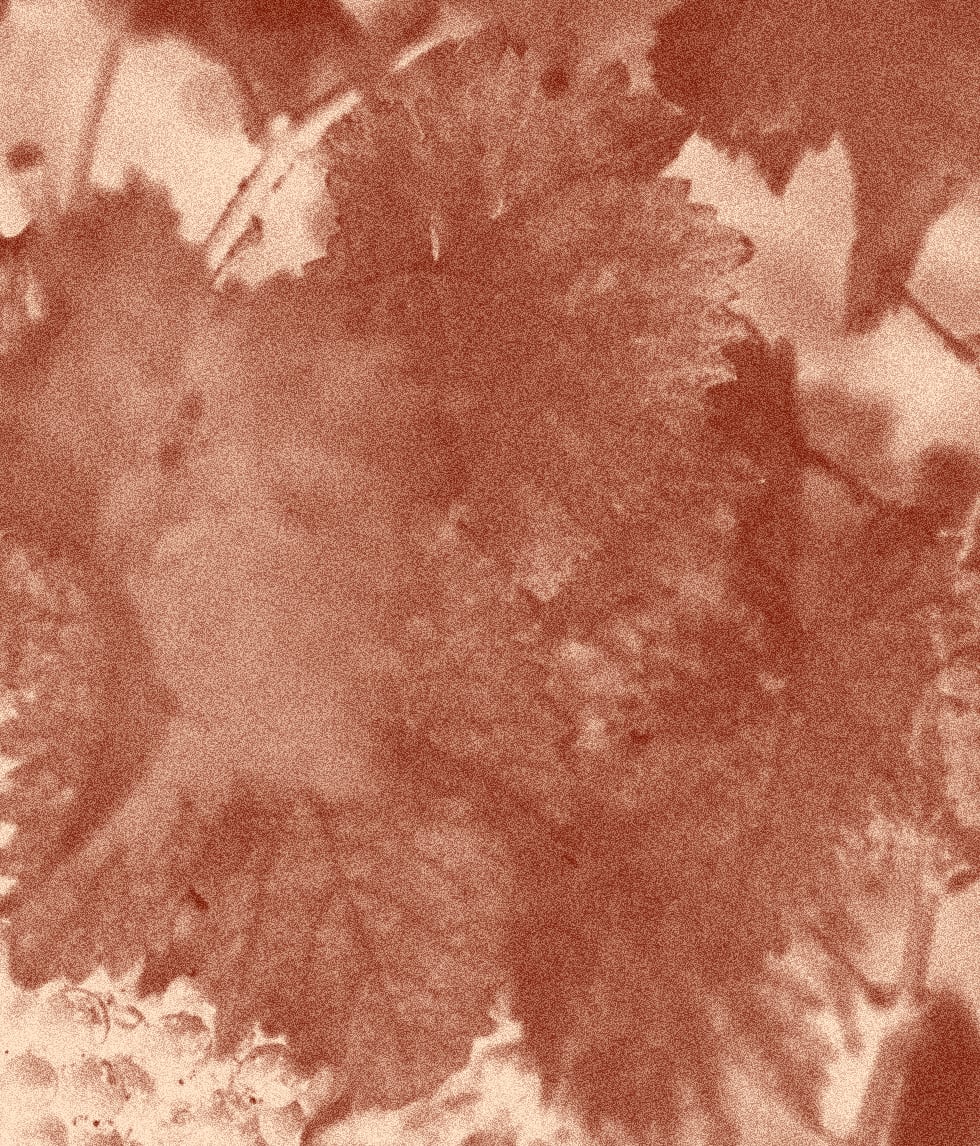
Giampiero Bea among the grapes drying for his legendary Passito.
Thankfully, these principles have become far more commonplace today than they were thirty years ago, but Bea’s wines remain singular: boisterous, unabashedly wild expressions of their undulating, sun-drenched hills of origin, each new vintage of which is eagerly anticipated by a legion of loyal clients. Giampiero’s wines always proudly display their vintage, and he pointedly resists striving for a consistent “product” from year to year. There is no green harvesting and no excessive sorting, as he wants each wine to reflect the entire season’s crop and not just a choice section; fermentations begin and end without being forced in either direction, thus varying in duration notably from vintage to vintage; and the wines are bottled when they’re deemed ready to be rather than according to some schedule, with the reds in particular generally spending upwards of four years in cask. There is no regulation of temperature, no pumping, no fining, and no filtering. Giampiero relies on patience, and plenty of it, to clarify his wines, and what is in the bottle is always a full-on reflection of the fruit and the story of the season that birthed it.
Farming
Certified organic, some biodynamic practices
Treatments
Copper-sulfate only, cover crops sown between the vines
Ploughing
Annual ploughing to promote vineyard health
Soils
Limestone-clay and gravels
Vines
Trained in Cordon (Arboreus vines are trained up trees), vines for Pipparello and Cerrete are at least 20 years old. San Valentino vines are 50 years old. Vines for Arboreus and Lapideus are over 80 years old
Yields
Controlled through severe winter pruning and debudding
Harvest
Entirely manual, late September to late October
Sourcing
Entirely estate fruit
Fermentation
After total destemming, wines ferment spontaneously in stainless-steel tanks without temperature control. Cuvaison lasts 35-60 days
Extraction
Red wines see punchdowns during fermentation
Chaptalization
None
Pressing
Vertical basket press
Malolactic Fermentation
Spontaneous, following alcoholic fermentation
Élevage
Wines age between 12 months and 5 years in stainless-steel tanks and large Slavonian oak botti
Extraction
Wines remain on their fine lees until assemblage prior to bottling
Chaptalization
All wines are unfined and unfiltered
Pressing
Applied only at bottling if necessary, with 40-55 mg/l total sulfur
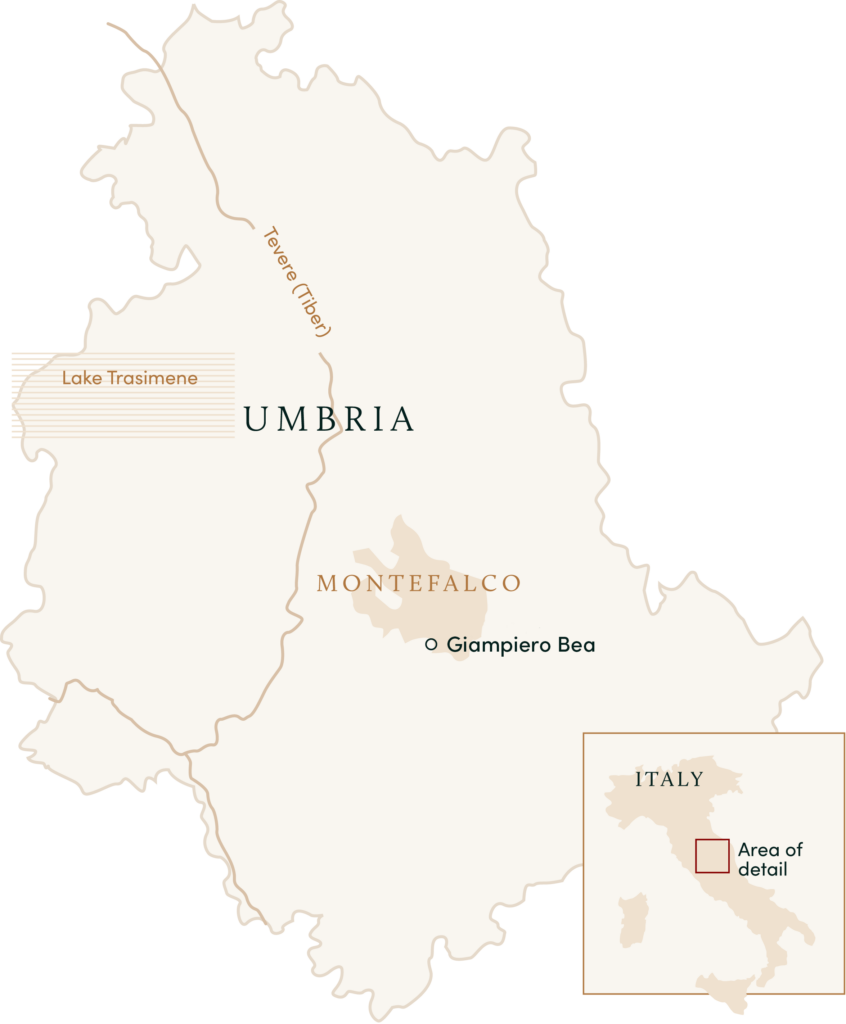
Sagrantino grapes at the Bea estate in October 2021.
Optional caption text here lorem ipsum
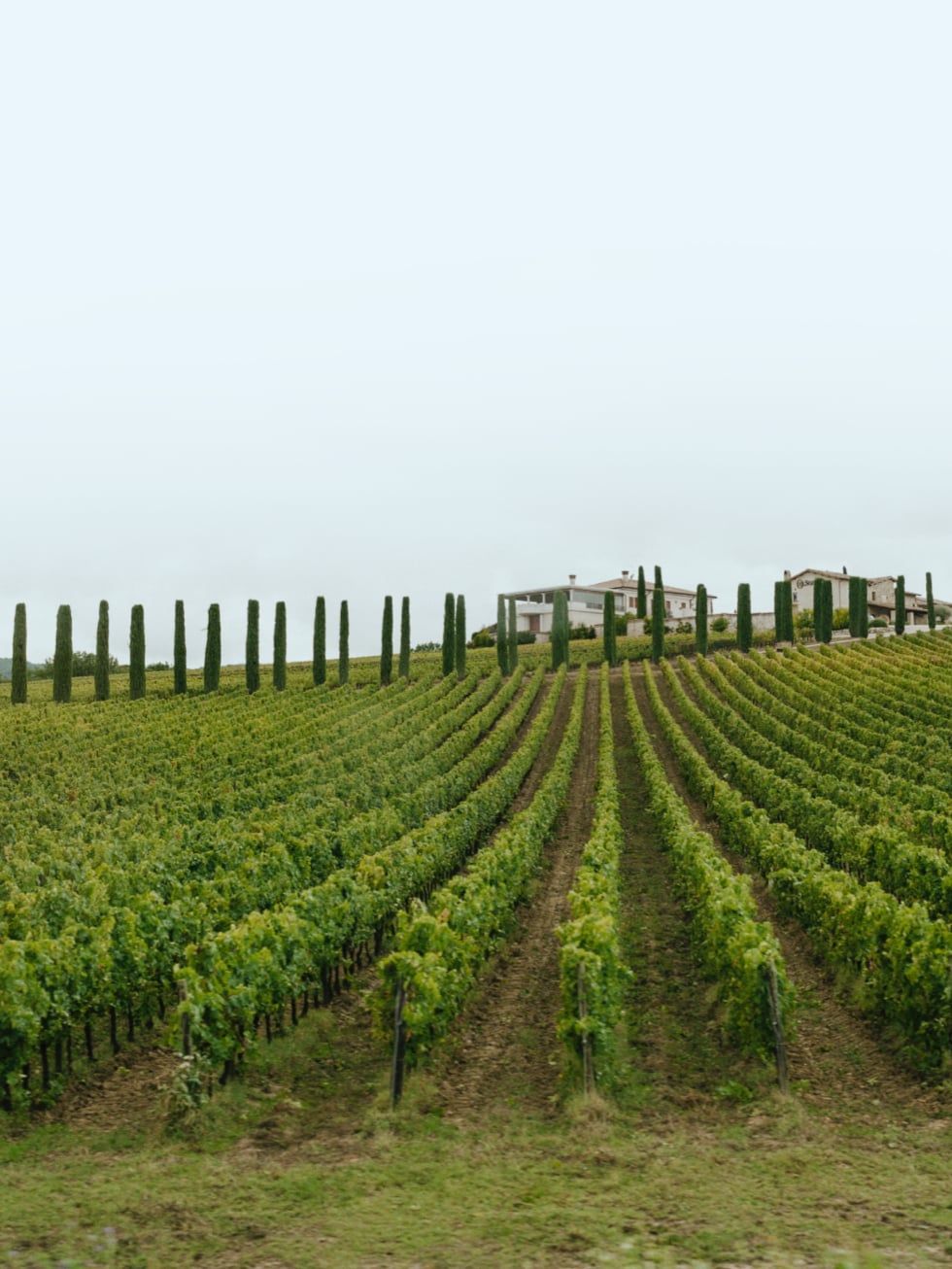
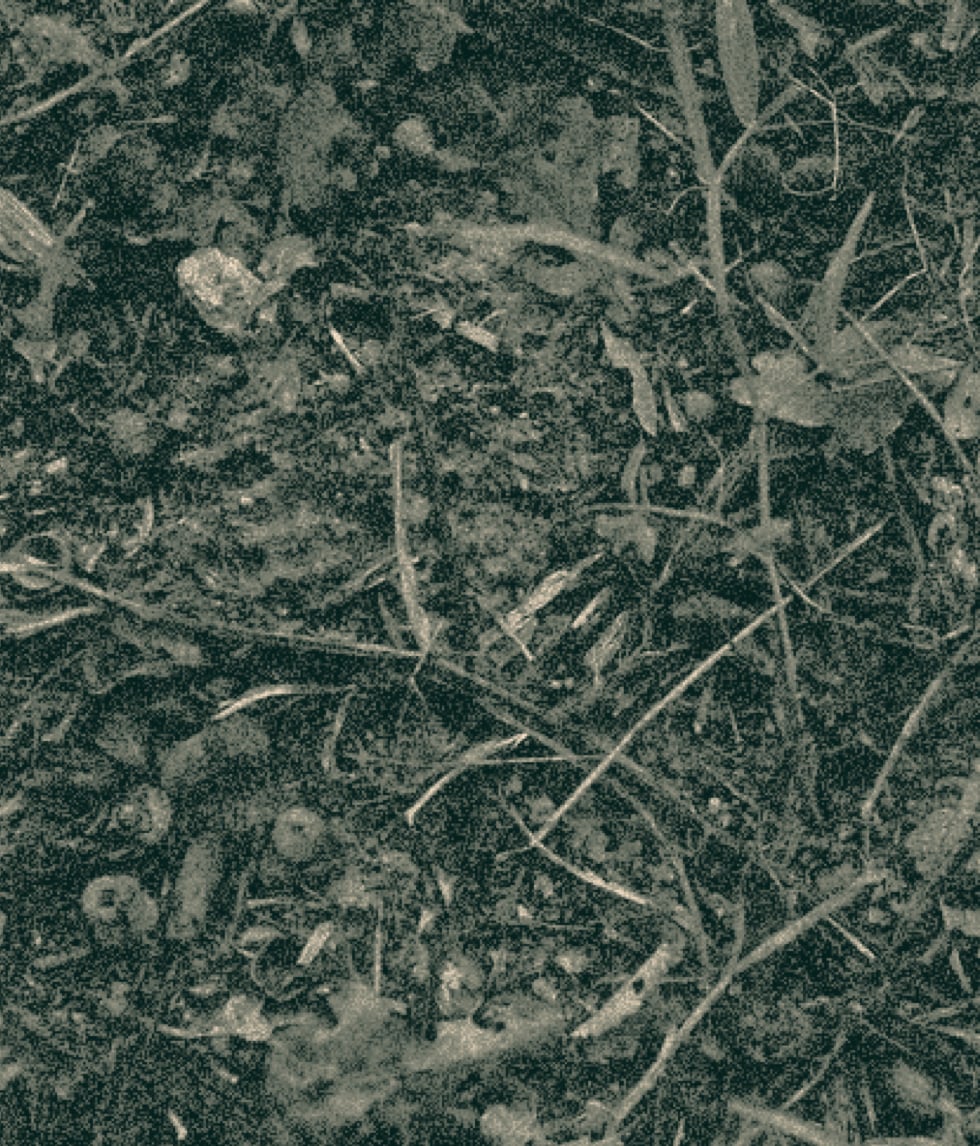
The vineyards are cultivated organically, all grapes are harvested manually and all wines are bottled without fining or filtration.
The entire property encompasses 15 hectares: 5 of which are dedicated to the vineyards, 2 to olives, and the remainder to the fruits, vegetables and grains that are grown. Sagrantino is the predominant grape, covering 60% of the vineyard surface. The remaining 40% is planted to Sangiovese and Montepulciano, with a small parcel planted to several white varieties. The vineyards are cultivated organically, all grapes are harvested manually and all wines are bottled without fining or filtration.
